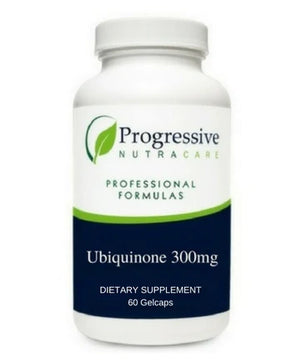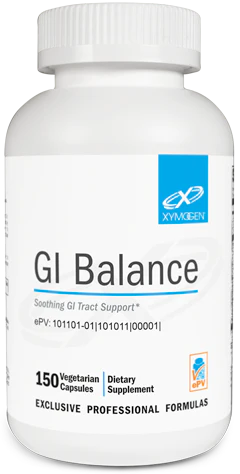How the Modern World Challenges Your Adrenal System- and What You Can Do About it

Modern Stressors
Have you ever had a car turn into your lane without seeing you? That skip of your heartbeat was your adrenal gland kicking in so that you can make a quick response and brake or change lanes. This response, though created for emotional stress or physical danger, is activated at even minimum levels of stress loads. The nervous system sends a message to the adrenals to release adrenaline or epinephrine and norepinephrine into the bloodstream causing several bodily changes including an increase in heart rate and blood pressure. These hormones allow for quick thinking or action in order to “survive” a stress event. This is the basis of the “fight or flight” response that is wrapped up with our species evolution. Modern society challenges us constantly to make instant decisions, often stress induced or stress inducing. Every time you drive, every time you interact with strangers, every time you have to choose from an overwhelming number of products, every time you have to rush to complete a task, your adrenal glands are working overtime. The constant race of our life can leave us exhausted not just in the short run, but in the longer run if your adrenal system is overused.
The Adrenal Glands
The adrenal glands are small glands located on top of each kidney and release hormones into the bloodstream that help to regulate bodily responses. The adrenal cortex produces three hormones: 1) Aldosterone helps maintain the body’s salt and water levels which in turn regulate blood pressure. 2) Cortisol helps to regulate the body’s stress response, regulate metabolism, assists in glucose production and has significant anti-inflammatory effects. 3) DHEA and Testosterone are also produced in the adrenal gland. Besides lifestyle stress, production of adrenal hormones can be disrupted by several factors in the environment, including heavy metals, pesticides, hormonal fluctuations, other environmental toxins, or lack of nutrients required for adrenal hormone synthesis. Since cortisol is the hormone that regulates stress response, it’s cortisol levels that can be measured to check as to whether our adrenal system is operating normally.
Adrenal Burnout or Adrenal Overdrive?
When our production of cortisol gets out of whack, it’s not as simple as the adrenal gland suddenly producing too much cortisol, or too little cortisol. Constant stress can do different things to different people. At the extremes, constant exposure to stress or other factors can result in adrenal burnout, also known as Addison’s Disease, where your adrenal glands are no longer capable of producing cortisol, or produce cortisol in such low amounts as to be insufficient. Symptoms of Addison’s Disease include: extreme fatigue, weight loss or loss of appetite, low blood pressure, lightheadedness or fainting, low blood sugar, nausea, diarrhea, abdominal pain, muscle and joint pains, and irritability. Conversely, that same exposure to stress or other factors, including the use of steroids, may instead send the adrenal system into overdrive greatly increasing cortisol levels, and at the extreme, causing Cushing Syndrome. Cushing Syndrome is when long-term exposure to high cortisol levels causes characteristic physical changes in the body that include: red cheeks, fat pads behind the neck and on the upper shoulders (buffalo hump), a rounded face, weight gain in the abdomen and weight loss in the legs, pink or purple stretch marks on the abdomen, and you may bruise easily. In addition to the physical characteristics of the syndrome, you may feel anxious, startle easily, and feel fatigued. These two conditions are usually the only recognized “medical” conditions relating to too much or too little cortisol, and they are indeed potentially serious conditions that should be treated accordingly. But what about imbalances of cortisol that don’t approach the extremes of Addison’s or Cushing?
Some doctors may say either that lesser imbalances of cortisol levels aren’t worth treating, or should only be treated with the same heavy hitting therapies that are used to treat full blown Addison’s or Cushing. In the case of low cortisol, this means steroids. In the case of Cushing, this means decreasing the use of steroids or using surgery or radiation to decrease a tumor is the source of the higher cortisol levels (rarely). The problem here is that there is rarely an acknowledgement that there can be symptoms of more minor variations in cortisol levels, and sometimes the fact that cortisol levels are altered can be missed altogether. If this isn’t the case, and treatment for Addison’s is initiated, then the side effects of the steroid can be difficult, and one can overcompensate for the level of cortisol and drive someone from Addison’s to Cushing. Isn’t there another way? Why does this state of affairs exist?
Adrenal Fatigue
The term “adrenal fatigue” was coined in 1998 by Naturopath James Wilson, PhD, an expert in alternative medicine. He defined it as “a group of related signs and symptoms (a syndrome) that results when the adrenal glands function below the necessary level." “According to the theory, if you have long-term stress (like the death of a family member or a serious illness), your adrenal glands burn out from prolonged production of cortisol. So adrenal fatigue sets in.” (Web MD)
Many doctors roundly reject this theory and say there is no such medical condition. Some go on to say that attempting to treat adrenal fatigue is dangerous because you risk overstimulating cortisol and leading to Cushing Syndrome or an adrenal crisis. A legion of patients who have suffered from “subclinical” adrenal imbalances might disagree. Why would there be such resistance to this theory from some members of the medical community? To start with, the term, “adrenal fatigue”, having been coined by someone outside the standard medical community was immediately labeled as an invention because the word itself didn’t describe a medical condition as defined by these same doctors. The medical community can be very conservative and slow to change. There have been many, many other examples of conditions that doctors were extremely slow to accept- if they ever did. An excellent example is Chronic Fatigue Syndrome, which was set forth as a condition by the World Health Organization as far back as 1969- and ignored by many doctors for decades, instead insisting to patients that it was, at best, “psychosomatic”. That position has begun to change, but the medical community can be moribund. The theory itself is not so different from the accepted way that the adrenal glands, and cortisol operate, so it’s not a stretch to think there is merit to it. This is particularly true when you consider the argument that too much cortisol could cause an adrenal crisis- the only real debate there, then, is whether lesser degrees of adrenal stress could also cause symptoms. Whether or not the theory of adrenal fatigue is true or not, there is are other considerations here- whether those symptoms that patients experience that are indeed from adrenal stress or some other cause, whether those patients can be tested in a way to determine an adrenal imbalance, whether a lesser degree of imbalance, below the threshold for steroid therapy should be treated, and whether steroid therapy is always the best strategy.
It’s all about the Balance
Standard treatment for Addison’s suggests the use of steroids to replace the lost cortisol. Using steroids for a slighter loss of cortisol might be akin to using a sledgehammer to drive a nail. Often this means that no treatment is offered by many doctors for slighter levels of adrenal imbalance. Couple that with the fact that a doctor may have a difficult time diagnosing an adrenal imbalance since many symptoms stemming from adrenal imbalances may also be similar to those from other conditions, especially thyroid imbalances, although certainly many other conditions qualify. This difficulty is compounded when the doctor may not take the time to truly listen to the patient, particularly if the doctor is seeing 50 patients a day. Add to that the fact that we are talking about a balance in adrenal hormones here- too little cortisol and you may feel fatigued, but you may feel the same with too much cortisol, because cortisol cycles throughout the day in your system. In the morning, when you get up and start the day, your cortisol should be higher to help you take on the challenges of the day. Low cortisol at the beginning of the day might indicate that you are cortisol insufficient. Your cortisol usually falls throughout the day, although some people may have a small peak in the afternoon. By bedtime, your cortisol should have lowered significantly, allowing you to relax and fall asleep. If your cortisol is still high at bedtime, then you might be producing too much cortisol. Other periods throughout the day can also be examined for cortisol levels, and imbalances there could exhibit a pattern that could be fixed by regulating cortisol, diet, or lifestyle changes. You don't have too much cortisol, particularly at the wrong times, but you don’t want too much either. Having a healthy cortisol balance, throughout the day as necessary, will help you feel more energetic, and less anxious in general. Standard testing for cortisol levels by most medical practitioners is through a serum blood test. Unfortunately, this test can only measure cortisol at a particular time of day- and that’s not usually right before you go to bed. The fact that many doctors only measure by snapshotting a single time of day can give an incomplete picture for the diagnosis of adrenal imbalance. It’s no wonder that unless your imbalance is severe, it may not be noticed.
Testing for Adrenal Imbalance
Ideally, testing for adrenal imbalance should be done another way, one that allows more than just one time specific measurement and permits more of an analysis of the plot of cortisol changes over the course of the day. It would also help to measure DHEA. Blood tests can’t measure a small drop in adrenal hormone production. Also, because blood testing is almost always done in the doctor’s office or at a blood draw station, even if blood tests were capable of measuring smaller drops in cortisol, multiple blood tests over the course of a day are not practical. A better solution is testing saliva for adrenal hormones. Saliva tests are superior to blood serum tests, not just because they are more effective in detection of cortisol at a given time, but because they are cost-efficient and patient friendly. They allow the patient to take salivary collection tubes home with them and collect saliva at four points over the day, including just after waking up and just before bed to allow a much more accurate- and sensitive- picture of the patient’s cortisol production over the course of the day. These tests are simply superior to blood serum collection tests, and can give a much more complete picture of a patient’s adrenal profile. If more specific information about adrenal production is known, then lesser degrees of adrenal imbalance can be treated. If at all possible, you should be tested before using natural substances to support your adrenal glands, both so that you have a more accurate picture of your adrenal hormone levels and so that you can monitor those levels over time.
What Are My Alternatives to Steroids?
If your adrenal function is severely compromised, then steroids may indeed be recommended. If you have less severe adrenal imbalance, either higher or lower cortisol than you should, then there are some natural options that you could try. Steroids can be important tools, but they can be dangerous as well. They have side effects when taken long term, possibly including: glaucoma, cataracts, high blood sugar, osteoporosis, and an increased risk of infections, since they suppress the immune system. This in addition to the fact that treating adrenal insufficiency with long term steroids risks overcompensating and causing too much cortisol to be in the system resulting in Cushing Syndrome, and eventually causing the adrenal system to crash and resulting in steroid induced adrenal insufficiency. If you haven’t tested (and you should), and you plan to take some sort of natural thyroid support, then you should try to identify if your adrenal system is producing too much or too little cortisol, and when. Ask yourself first- does stress make your symptoms worse. If so, then try to identify if you may have too little or too much cortisol.
Too Much Cortisol
Do you feel anxious? Wired before bed and can’t sleep? Do you startle easily? Do you have any of the physical characteristics of Cushing Syndrome? Then your adrenals might be in overdrive and you are producing too much cortisol, or producing for too long during the day. Melatonin might help you better regulate your circadian rhythms and sleep better. Ashwagandha and L-theanine may help you to naturally calm, decrease stress, and decrease cortisol levels. L-theanine has been called an “adaptogen” that helps the brain regulate stress. In addition, try calming activities like meditation, exercise during the day, and avoid screens close to bedtime.
Too Little Cortisol
If you feel fatigued, tired all of the time, have a hard time getting out of bed and starting the day, and mentally foggy, then you might have too little cortisol being produced by the body. In this case, you might want to consider an adrenal hormone from an animal source rather than synthetic steroids, and natural substances like ginseng, eleuthero, and schisandra for energy. As with any products, monitor your usage, consult your doctor, and note any changes, positive or negative over time. Many people may have impaired adrenal systems, and using a natural substance to help support your energy or anxiousness may make a difference in your life.
*By including product links in this article, Progressive Nutracare is providing a reference to our readers to assist in searching and cataloging the site. These products have not been evaluated by the F.D.A. are not intended to treat, diagnose, cure, or prevent disease.
- Tags: Adrenal Article Mental Health
- Robert Thomas







Comments 0